NCERT Solutions are helpful as reliable study material to prepare for the CBSE Class 12 Economics Board examinations. This study resource gives useful and authentic knowledge of NCERT Solutions as it is collated by subject matter experts with vast experience in the field.
Download PDF of NCERT Solutions for Class 12 Economics Chapter 4 – Determination of Income and Employment
Access NCERT Solutions for Class 12 Economics Chapter 4
NCERT Macroeconomics Solutions Class 12 Chapter 4
1. What is marginal propensity to consume? How is it related to marginal propensity to save?
MPC, or Marginal Propensity to Consume, is a vital component of the Keynesian theory of macroeconomics, and it is defined as the increase in consumer spending due to an increase in income. It is expressed as ∆C/∆Y, which shows the change in consumption with a change in income.
Where ∆C = Change in consumption
∆Y = Change in Income
MPC and MPS (Marginal propensity to save) are related as follows:
MPC + MPS = 1
or MPS = 1- MPC
or MPC = 1- MPS
For example, if a person gets Rs. 1000 extra as a bonus, and if he spends around Rs. 700 and saves Rs. 300, then his MPC will be 0.7 and MPS will be 300 or (1- 0.7) = 0.3.
2. What is the difference between ex-ante investment and ex-post investment?
| Ex-ante Investment | Ex-post Investment |
| The investment planned by the firms in the economy during a particular period of time is called ex-ante investment. | The actual investment that is made by all the entrepreneurs in the economy during a period is called ex-post investment. |
| The planning is done based on future expectations. | It is the result of actual investment |
3. What do you understand by ‘parametric shift of a line’? How does a line shift when its (i) slope decreases, and (ii) its intercept increases?
Consider the equation of the straight line of form b = ma + ε, where m > 0 is called the slope of the straight line (a) and ε > 0 is the intercept on the vertical ( b) axis. Any increase in a will result in increasing the value of b by a unit of m. Here m and ε are known as parameters of the graph, and their role is to regulate the graph’s position.
Parametric shift refers to the changes in the curve due to changes in the value of the entities m and ε in the graph.
According to the conditions in question
i. If the slope decreases, then the consumption curve will shift downwards
ii. When the intercept increases, the consumption curve will move parallelly with the intercept.
4. What is ‘effective demand’? How will you derive the autonomous expenditure multiplier when price of final goods and the rate of interest are given?
Effective demand is the demand for a product or service when purchasers become constrained in a market. It also refers to their ability and willingness to purchase goods at different levels. According to the macroeconomic theory by Keynes, effective demand is referred to as the point of equilibrium where aggregate demand equals aggregate supply.
Graphically it can be represented as :
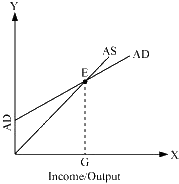
In this graph, the x-axis represents income, and the y-axis represents the level of aggregate demand. The two curves, AD and AS, meet at equilibrium point E. Effective demand is shown by EG. AD represents the output level. The autonomous expenditure multiplier can be derived as follows
Y = AD (at equilibrium)
AD = A + cY
Therefore
Y = A + cY
or A = Y – cY
A = Y (1 – c)
Y = A / (1 – c)
Where
A = Autonomous expenditure
c = MPC or Marginal Propensity to Consume
Y = Level of income
1 / 1-c = autonomous expenditure multiplier
Therefore we can say that the autonomous expenditure multiplier is dependent on the MPC and Income level.
5. Measure the level of ex-ante aggregate demand when autonomous investment and consumption expenditure (A) is Rs 50 crores, and MPS is 0.2 and level of income
(Y) is Rs 4000 crores. State whether the economy is in equilibrium or not (cite reasons). 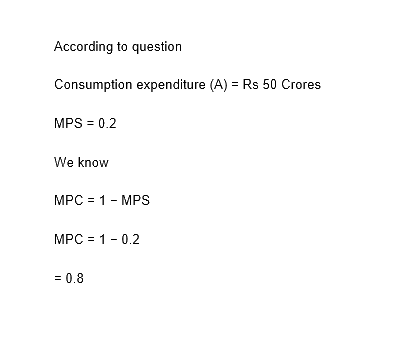
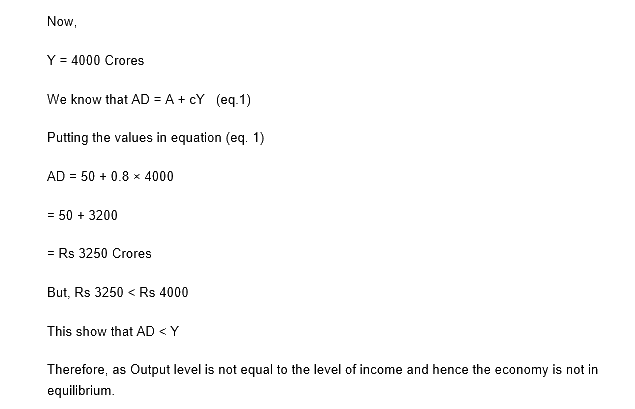
6. Explain ‘Paradox of Thrift’.
Paradox of thrift is said to be a situation where people tend to save more money, and this form of increased saving leads to reduced consumption and as a result, there is a decrease in aggregate consumption. Such a system of savings will lead to a decrease in levels of employment and reduce the total savings of the economy, and slows down the growth of the economy. This is one of the central components of Keynesian economics.
NCERT Solution for Class 12 Economics Chapter 4 – Determination Of Income And Employment. This chapter explains in brief a manner about how income and employment are determined.
Chief concepts of this chapter –
- Aggregate demand
- Aggregate supply
- Consumption function
- Saving function
- Effective demand
Conclusion
NCERT Solutions for Class 12 Economics Chapter 4 provides a broad degree of illustrative examples, which helps the students to comprehend and learn quickly. The above-mentioned are the illustrations for the Class 12 CBSE syllabus. For more solutions and study materials of NCERT solutions for Class 12 Economics, visit BYJU’S or download the app for more information.
Also, explore –
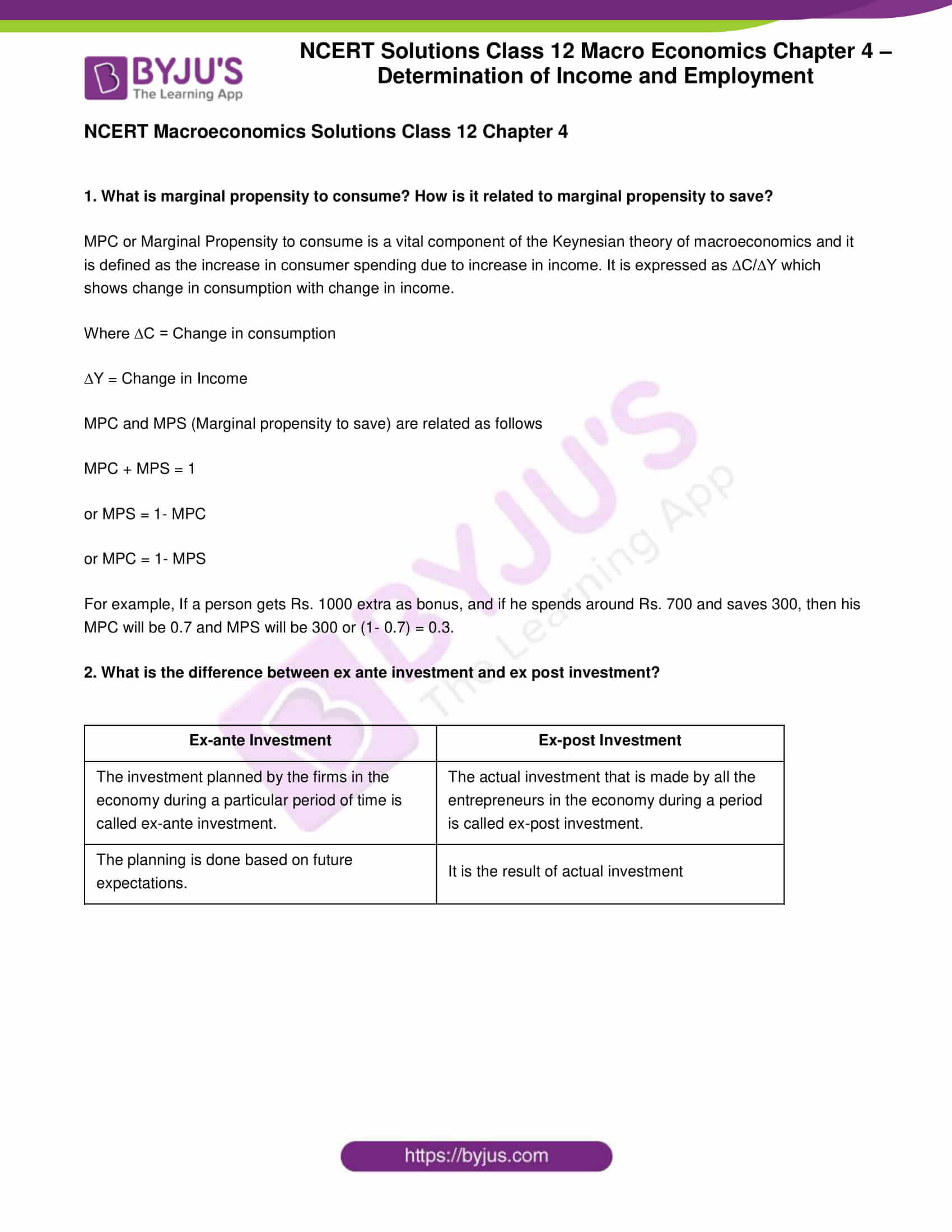
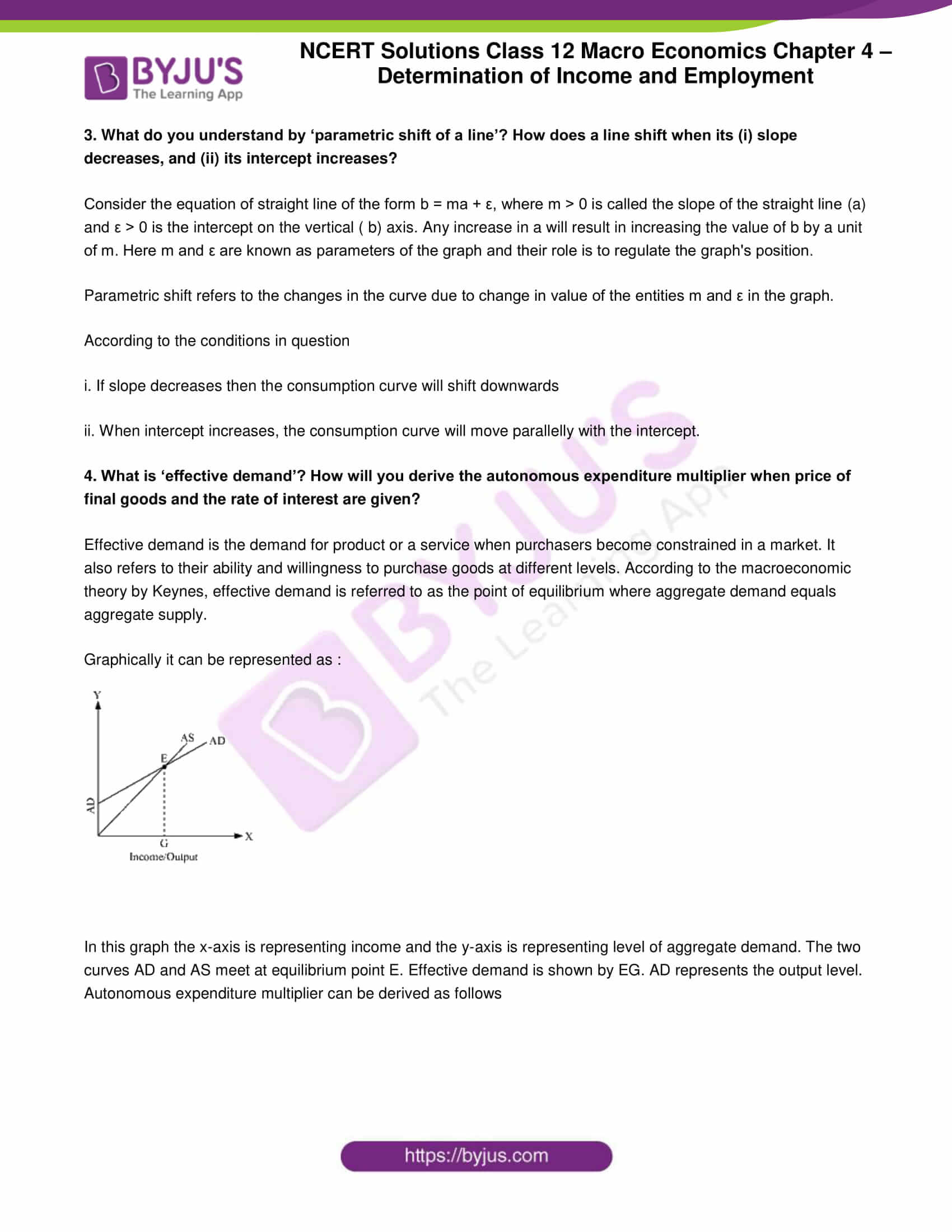
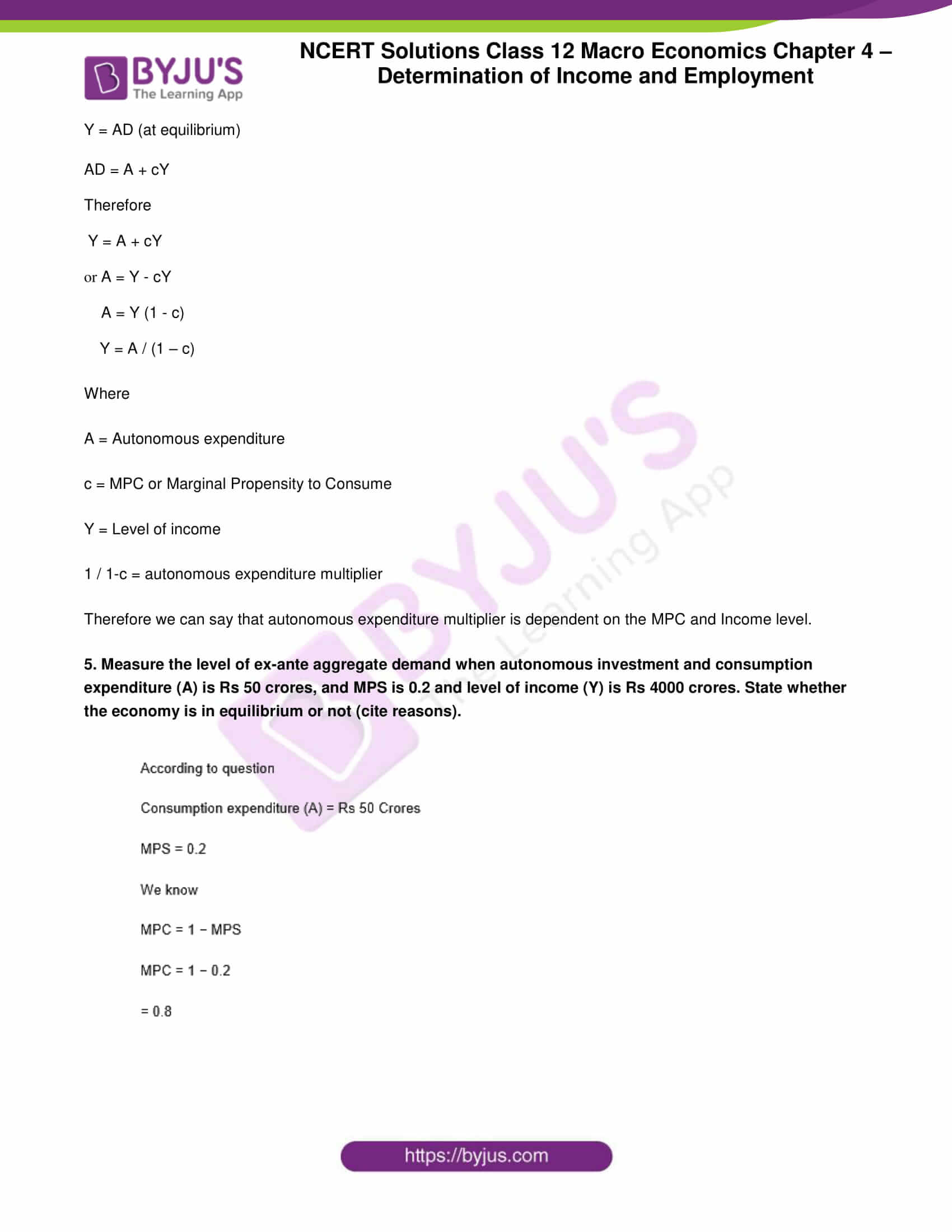
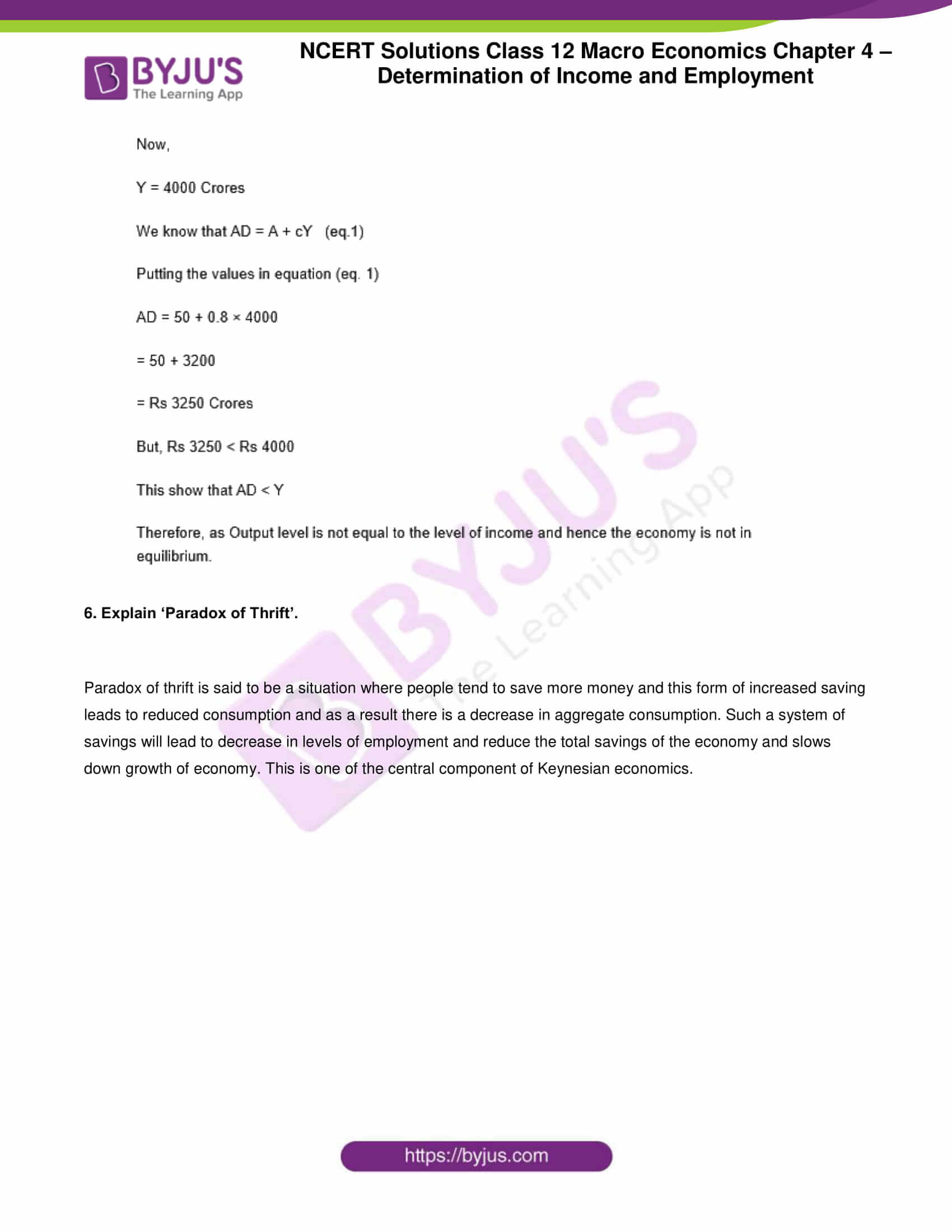


Comments